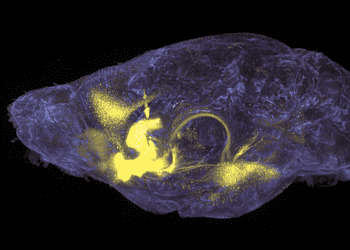South Korean researchers have developed a small, temporary tattoo that could calm a lot of nerves for people anxious about going out to bars and nightclubs. On the surface, it looks like any playful skin sticker you might pick up at a party or amusement park. But hidden within the colorful ink is a powerful chemical sensor that can detect one of the most notorious date rape drugs — in less than a second.
The sensor detects the compound γ-hydroxybutyrate, or GHB. Tasteless, colorless, and nearly impossible to detect without special tools, GHB has become infamous as a drug used to facilitate sexual assault. A few drops slipped into a drink can leave someone confused, disoriented, or unconscious, often with no memory of what happened.

A New Form of Protection
Until now, people worried about drink spiking had few practical options. Test strips, nail polish, even color-changing coasters have been developed to detect spiked drinks, but most of these tools require planning, careful timing, and aren’t always discreet. Not to mention most take minutes to show results — time that might not be available.
But a team of researchers came up with a solution.
“The sticker responds within one second to even low concentrations of the drug γ-hydroxybutyrate (GHB),” the research team reported in ACS Sensors. A single drop of a contaminated drink touched to the ‘fake tattoo’ (dabbing a fingertip) causes a chemical receptor embedded in the sticker to change color. The reaction is visible immediately and unmistakable: the design, often printed in letters or shapes, turns bright red.
The system relies on a chemical called 2-(3-bromo-4-hydroxystyryl)-3-ethylbenzothiazol-3-ium iodide — or BHEI for short. This molecule reacts specifically with GHB and does so at concentrations as low as 0.01 micrograms per milliliter. That’s below the level typically required to cause physiological symptoms, providing a potentially critical early warning.
Even more impressively, the sticker retains that red warning signal for up to 30 days. That could be useful in reporting tampering or gathering forensic evidence.
Drink Spiking: A Persistent and Underreported Problem
Despite its serious consequences, drink spiking is often dismissed or doubted, and it remains alarmingly common. In the UK, the alcohol awareness organization Drinkaware estimates that 11% of adults have experienced drink spiking. That includes 13% of women and 9% of men.
The drugs used for spiking are difficult to detect, in part because their effects mimic intoxication. Victims may seem simply drunk. Yet what really happens is more sinister. “These drugs are colorless and tasteless, inducing a stupor in the victim that’s similar to severe alcohol intoxication,” ACS noted in a press release. Victims often lose memory and control, leaving them vulnerable and unable to consent.
The ‘tattoo’ doesn’t rely on gut feelings, strange tastes, or second-guessing. A simple swipe of the finger and a glance at the skin could mean the difference between safety and harm.
Built for the Real World
The team engineered the sticker to hold up under pressure — literally. It adheres like any commercial tattoo sticker and was tested against water, scratches, stretching, and twisting. It stayed functional and readable even in humid environments, including over drinks like whiskey, vodka, beer, soju, and coffee.
And because it looks like a normal tattoo available in different shapes and designs, it can be worn discreetly. That’s a key feature. In many social environments, testing your drink can carry stigma or awkwardness. This sticker makes the act invisible at no social cost.
What’s more, the technology is cheap and scalable. The materials used include a thin plastic film, a diluted glue solution for sticking to skin, and an agarose gel holding the BHEI sensor. These are common materials in biosensor design, which may make the sticker available to the public quickly.

What Comes Next?
This smart sensor joins a growing arsenal of tools designed to help individuals safeguard themselves against drug-facilitated assault. But researchers and advocates alike caution against seeing this as a full solution.
Like all such technologies, the sticker treats a symptom of a deeper societal issue — one rooted in violence, coercion, and the persistent targeting of vulnerable people. So the tattoo comes in as a tool. A product that is wearable, affordable, discreet, fast, that could empower individuals to detect danger before it strikes.
And it all starts with a drop, a fingertip, and a flash of red.






